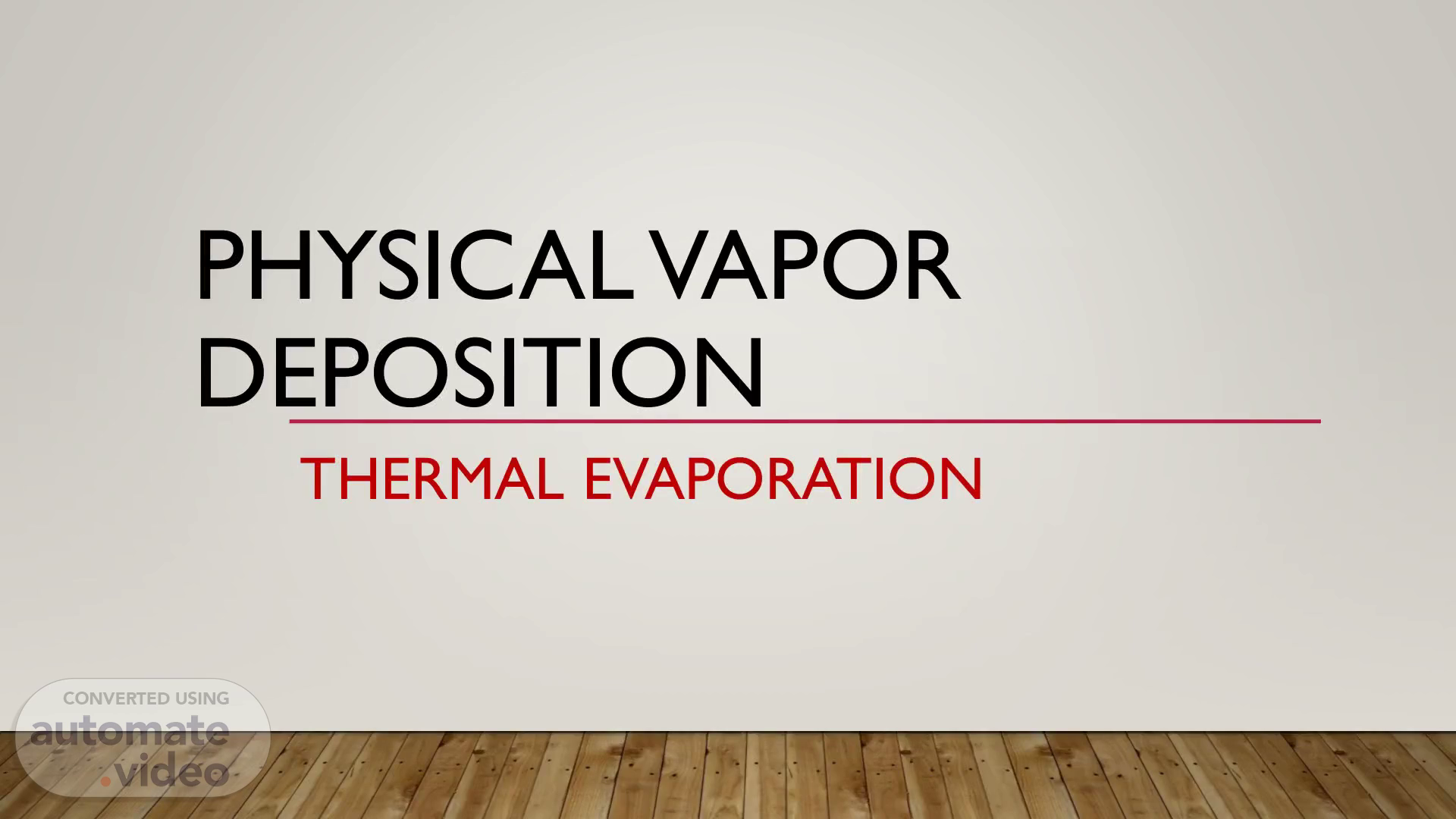
Physical vapor deposition
Scene 1 (0s)
. . DEPOSITION THERMAL EVAPORATION. DEPOSITION THERMAL EVAPORATION.
Scene 2 (8s)
. . • Types of PVD • Difinition of Thermal Evaporation Application • Advantages and disadvantages.
Scene 3 (23s)
. . THERMAL EVAPORATION SYSTEM The source material is evaporated in high vaccum and deposited on a substrate. SPUTTERNIG This involves ejecting material from « target » that is a source into a substrate such as a silicon wafer..
Scene 4 (50s)
. . • Is the oldest techniques used for depositing thin films,thermal evaporation orvaccum evaporation is widely used in the laboratry and in industry for depositing metal and metal alloys. Also it facilitates the vapor particles moving and directly reaching a substrate where those vapors again change to a solide state. • It is one of the simplest forms of PVD and typically uses a resistive heat source to evaporate a solid material in a vacuum environment to form a thin film. The material is heated in a high vacuum chamber until vapor pressure is produced..
Scene 5 (1m 51s)
. . Chamber Substrate Holder Deposited Substrate Thin Film o Vaporized O Material Target Material Evaporator Heater.
Scene 6 (2m 1s)
. . DISADVANTAGES Poor step coverage ( step coveraage is more difficultto improve) • forming alloys can be difficult lower throughput due to low vacuum. ADVANTAGES Highest purity of films • Simple and cheap Less surface damage of the substratc.